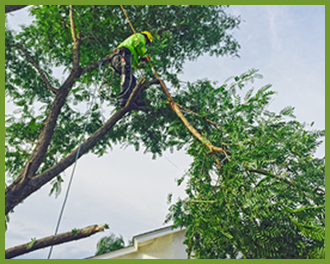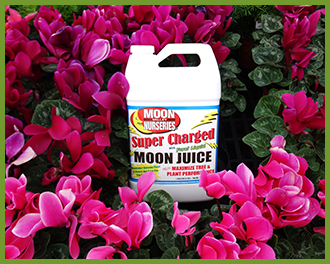must read for a fantastic landscape all summer
Tips and tricks from our nursery pros!

Summer is here and with it comes special requirements on how we need to take proper care of everything on our landscapes. Proper care now and throughout the entire summer can result in a fantastic looking landscape when we enter the fall season.
There are many steps you can take for proper care and all of them are pretty simple, do not require a lot of skill, and can be done right away. Our nursery pros, who all have decades worth of experience in providing proper care for our desert and non-desert trees have identified five key areas and steps you can take to providing great care for your yard all summer long. If you have any questions, our nursery pros are always available and willing to help you out. Click here to find the nearest nursery to you.
 Water
Water
This is the most crucial thing when it comes to keeping your landscape looking good all summer long. For starters, you want to water early in the morning sometime between 4 a.m. and 8 a.m. as this reduces the evaporation loss. You will always want to deep water which is a slow application of water over a period of time. This allows the entire root zone to become saturated. The amount of water you apply depends on the tree or shrub you are watering. With trees, you will want to wet the soil at least three feet deep and with shrubs at least one foot deep. Use a soil probe to determine the depth of watering.

During periods of sustained excessive heat, we recommend adding one day or irrigation to your watering cycle - this is the easiest and most crucial step to take in protecting your plants. You want to avoid over-watering your trees, but the soil should be somewhat moist for most of the day. Unlike the regular weather, it's advisable to keep the soil around your trees moist, rather than let them dry between watering.
 Pruning
Pruning
With the monsoon season just around the corner, it is time to think about pruning your tree to avoid any snapping limbs and trunks that come with those microbursts. You're probably thinking about the old tree on your property, which is smart, but don't forget about the young tree. They can also suffer damage during the monsoon season. Having your trees trimmed by an ISA Certified Arborist who understands healthy tree structure is your best for avoiding problems. If you are a do-it-yourself kind of person, our nursery pros have laid out three common mistakes that most people make. Be sure to check that out.
Some other things to consider when pruning is removing dead wood ASAP. Dead wood cannot bend under pressure like living branches. Trees like the Desert Museum Palo Verde or Chilean Mesquite are supposed to have layered canopies. You should be able to see the sun when standing under the tree. If you cannot see the sun consider thinning out your tree. Look for any cracks. They will be splitting sooner rather than later and with the monsoon season approaching that could be at any time. If you have any questions about your tree you can ask the nursery pros at any location.
 Tree Wrap
Tree Wrap
For those of us who live out in the desert, we have all had our fair share of sunburns. They are very painful and very inconvenient. Fortunately, we can retreat to our homes, put extra layers on, or even wear sunscreen. Now, our trees are not this fortunate as they can also get a nasty sunburn, but they can't just run inside the house to avoid the sun. When a tree gets a sunburn, the trunk and branches appear dried or cracked and become susceptible to diseases and rot.
To avoid a sunburn, especially on fruit and citrus, as well as younger trees and plants, wrap or paint your trees. Any reflective paint or wrap around the trunk will work. We offer tree wrap at all of our nursery locations.
 Fertilizer
Fertilizer
Even with proper care, there may be a tree or shrub that just isn't handling the heat that well. That is ok, as there are solutions to these problems. With so many fertilizers on the market, it can be overwhelming trying to find the correct one for your landscape. Fortunately, the nursery pros at Moon Valley Nurseries have eliminated the headaches and guessing game for you by developing highly specialized blends of fertilizer designed to trigger growth responses for our native soils. Below is a quick overview of the fertilizers Moon Valley Nurseries offers.
Supercharged Moon Juice - Learn more
When to use: New planting, freeze/frost damage, wind/physical damage, and heat/summer stress
Super Palm Juice - Learn more
When to use: New planting, stressed or yellowing palms, heat stress
Moon Green - Learn more
When to use: Reduce soil alkalinity, neutralize caliche or tight clay soil, make thick and fuller hedge plants, darker green leaves
Moon Dust - Learn more
When to use: Vigorous root growth, rich green leaves, strong new growth
Soil & Water Conditioner - Learn more
When to use: Reduce effects of salt present in water and soil, encourage deeper root growth, loosen tight/heavy soil
 Mulch
Mulch
Mulch is quite often overlooked as a great way to provide excellent care to your trees and shrubs in the summer. For starters, mulch can help keep the soil cool and it can cut down on surface evaporation. By cutting down on surface evaporation, it increases the ability of the soil to retain moisture, which can then decrease the amount of watering you need to do. Mulch will eventually break down, which in turn will provide nutrients to the soil. And lastly, it can help reduce weeds. We know that you do not want to pull weeds in the summer. Eliminate that horrendous chore with some mulch.
Submit a Comment